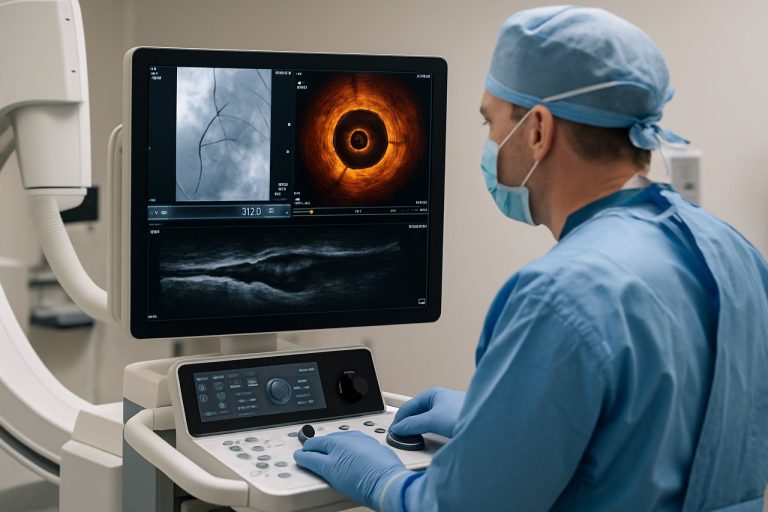
Enzyme Engineering for Nanomedicine in 2025: Unleashing Precision Therapies and Transforming Drug Delivery. Explore the Breakthroughs, Market Dynamics, and Future Opportunities Shaping the Next Era of Nanomedicine.
- Executive Summary: Key Findings and 2025 Outlook
- Market Size, Segmentation, and 2025–2030 Growth Forecast (CAGR: 30%)
- Technology Landscape: Innovations in Enzyme Engineering for Nanomedicine
- Applications: Targeted Drug Delivery, Diagnostics, and Therapeutic Platforms
- Competitive Analysis: Leading Players, Startups, and Strategic Partnerships
- Regulatory Environment and Intellectual Property Trends
- Investment Trends and Funding Landscape
- Challenges and Barriers to Commercialization
- Future Outlook: Emerging Opportunities and Disruptive Technologies (2025–2030)
- Conclusion and Strategic Recommendations
- Sources & References
Executive Summary: Key Findings and 2025 Outlook
Enzyme engineering is rapidly transforming the landscape of nanomedicine, offering unprecedented precision in diagnostics, targeted drug delivery, and therapeutic interventions. In 2025, the field is characterized by significant advancements in the rational design and directed evolution of enzymes, enabling the creation of highly specific biocatalysts tailored for nanoscale medical applications. Key findings from the past year highlight the successful integration of engineered enzymes into multifunctional nanoparticles, enhancing their stability, activity, and biocompatibility for in vivo use.
A major trend is the development of enzyme-powered nanomotors and nanorobots, which leverage catalytic activity for autonomous navigation and controlled drug release within complex biological environments. These innovations are being spearheaded by collaborations between academic institutions and industry leaders such as Thermo Fisher Scientific Inc. and Merck KGaA, who are providing advanced enzyme libraries and screening platforms. Additionally, the use of computational protein design, supported by organizations like The Royal Society of Chemistry, is accelerating the discovery of novel enzyme functionalities suitable for nanomedical devices.
Regulatory progress has also been notable, with agencies such as the U.S. Food and Drug Administration issuing updated guidelines for the clinical evaluation of enzyme-based nanotherapeutics, reflecting growing confidence in their safety and efficacy profiles. This regulatory clarity is expected to drive further investment and expedite the translation of laboratory breakthroughs into clinical practice.
Looking ahead to 2025, the outlook for enzyme engineering in nanomedicine is highly promising. The convergence of synthetic biology, nanotechnology, and artificial intelligence is anticipated to yield next-generation enzyme-nanoparticle conjugates with programmable functions, improved targeting, and minimized immunogenicity. Strategic partnerships between biotechnology firms and healthcare providers, such as those fostered by Nature Research and National Institutes of Health, are expected to accelerate commercialization and broaden the therapeutic scope of these technologies.
In summary, enzyme engineering is poised to play a pivotal role in the evolution of nanomedicine in 2025, with key findings underscoring its potential to revolutionize disease diagnosis, treatment, and patient outcomes.
Market Size, Segmentation, and 2025–2030 Growth Forecast (CAGR: 30%)
The global market for enzyme engineering in nanomedicine is poised for significant expansion, driven by rapid advancements in biotechnology, nanotechnology, and precision medicine. In 2025, the market is estimated to be valued at approximately USD 1.2 billion, with projections indicating a robust compound annual growth rate (CAGR) of 30% through 2030. This growth is underpinned by increasing demand for targeted drug delivery systems, innovative diagnostic tools, and enzyme-based therapeutics that leverage nanoscale engineering for enhanced efficacy and specificity.
Market segmentation reveals three primary domains: therapeutics, diagnostics, and research applications. The therapeutics segment currently dominates, accounting for over 50% of the market share, as enzyme-engineered nanoparticles are increasingly utilized in cancer therapy, metabolic disorders, and enzyme replacement treatments. Diagnostics represent the second-largest segment, with engineered enzymes enabling ultrasensitive biosensors and point-of-care devices for early disease detection. The research applications segment, while smaller, is expanding rapidly due to the adoption of enzyme-nanomaterial conjugates in drug discovery and molecular biology.
Geographically, North America leads the market, supported by strong investments in nanomedicine research, a robust biotechnology sector, and favorable regulatory frameworks. Europe follows closely, with significant contributions from academic and clinical research institutions. The Asia-Pacific region is expected to witness the fastest growth, propelled by increasing healthcare expenditure, government initiatives, and the emergence of local biotechnology firms.
Key drivers of this market include the rising prevalence of chronic diseases, the need for minimally invasive therapies, and the growing pipeline of enzyme-engineered nanomedicines in clinical trials. Strategic collaborations between academic institutions, biotechnology companies, and pharmaceutical manufacturers are accelerating innovation and commercialization. Notable industry players and research organizations, such as Genentech, Inc., Amgen Inc., and National Institute of Biomedical Imaging and Bioengineering (NIBIB), are actively investing in R&D to develop next-generation enzyme-nanoparticle platforms.
Looking ahead, the enzyme engineering for nanomedicine market is expected to maintain its momentum, with breakthroughs in protein design, CRISPR-based editing, and nanocarrier technologies further expanding the scope of applications. The anticipated CAGR of 30% from 2025 to 2030 underscores the sector’s potential to transform disease management and personalized medicine.
Technology Landscape: Innovations in Enzyme Engineering for Nanomedicine
The technology landscape of enzyme engineering for nanomedicine in 2025 is marked by rapid advancements in both the design and application of enzymes at the nanoscale. Enzyme engineering, which involves the modification of natural enzymes to enhance their properties or confer new functionalities, is increasingly being integrated with nanotechnology to create highly specific, efficient, and biocompatible therapeutic and diagnostic tools. This convergence is driving innovation in targeted drug delivery, biosensing, and disease treatment.
One of the most significant trends is the development of nanozymes—engineered nanomaterials with enzyme-like catalytic activity. These artificial enzymes offer advantages over their natural counterparts, such as improved stability, tunable activity, and the ability to function in harsh physiological environments. Research institutions and companies are leveraging advanced protein engineering techniques, including directed evolution and computational design, to create enzymes with enhanced substrate specificity and catalytic efficiency tailored for nanomedical applications. For example, Thermo Fisher Scientific Inc. and Sigma-Aldrich (Merck KGaA) are actively developing enzyme reagents and platforms that support the integration of engineered enzymes into nanocarriers and diagnostic devices.
Another area of innovation is the use of enzyme-powered nanomotors and nanorobots for targeted drug delivery. These nanoscale devices utilize the catalytic activity of engineered enzymes to propel themselves through biological fluids, enabling precise navigation to disease sites such as tumors or sites of infection. This approach is being explored by research groups in collaboration with organizations like the National Institutes of Health (NIH), which funds projects focused on the biomedical applications of enzyme-driven nanomachines.
Additionally, enzyme engineering is enhancing the sensitivity and selectivity of nanoscale biosensors for early disease detection. By immobilizing engineered enzymes on nanostructured materials, companies such as Abbott Laboratories are developing next-generation diagnostic platforms capable of detecting biomarkers at ultra-low concentrations, facilitating earlier intervention and personalized treatment strategies.
Looking ahead, the integration of artificial intelligence and machine learning is expected to further accelerate enzyme design, enabling the rapid identification of novel enzyme variants optimized for nanomedical use. As regulatory agencies like the U.S. Food and Drug Administration (FDA) provide clearer guidance on the clinical translation of these technologies, the adoption of engineered enzymes in nanomedicine is poised to expand, offering new solutions for complex medical challenges.
Applications: Targeted Drug Delivery, Diagnostics, and Therapeutic Platforms
Enzyme engineering has emerged as a transformative approach in nanomedicine, enabling the design of highly specific and efficient platforms for targeted drug delivery, advanced diagnostics, and innovative therapeutic interventions. By tailoring enzyme structure and function at the molecular level, researchers can create biocatalysts that respond to unique physiological cues, thereby enhancing the precision and efficacy of nanomedical applications.
In targeted drug delivery, engineered enzymes are frequently integrated into nanoparticles or nanocarriers to achieve site-specific activation of therapeutics. For example, enzyme-responsive nanocarriers can remain inert during circulation and release their payload only in the presence of disease-associated enzymes or microenvironments, such as the acidic pH or elevated protease activity found in tumor tissues. This strategy minimizes off-target effects and improves therapeutic outcomes. Companies like Creative Enzymes are actively developing enzyme-based systems that can be conjugated to nanomaterials for controlled drug release.
Diagnostics also benefit significantly from enzyme engineering. Engineered enzymes can be used as biosensors, amplifying signals in response to specific biomarkers. For instance, enzyme-linked nanoparticles can detect minute concentrations of disease markers, enabling early diagnosis of conditions such as cancer or infectious diseases. The National Institute of Biomedical Imaging and Bioengineering supports research into enzyme-based diagnostic platforms that leverage nanotechnology for enhanced sensitivity and specificity.
Therapeutic platforms are being revolutionized by enzyme engineering as well. Enzyme-prodrug therapy, where engineered enzymes convert non-toxic prodrugs into active drugs at the disease site, is a promising approach for reducing systemic toxicity. Additionally, enzyme-powered nanomotors are being explored for their ability to navigate biological environments and deliver therapeutics directly to target cells. Organizations like Nanomedicines Innovation Network are at the forefront of developing such advanced therapeutic systems.
Overall, the integration of enzyme engineering with nanomedicine is driving the development of next-generation medical technologies. These advances promise to improve the specificity, safety, and effectiveness of treatments, diagnostics, and drug delivery systems, paving the way for more personalized and responsive healthcare solutions in 2025 and beyond.
Competitive Analysis: Leading Players, Startups, and Strategic Partnerships
The competitive landscape of enzyme engineering for nanomedicine in 2025 is characterized by a dynamic interplay between established biotechnology leaders, innovative startups, and a growing web of strategic partnerships. Major players such as Novozymes A/S and BASF SE have leveraged their extensive enzyme engineering expertise to develop tailored biocatalysts for drug delivery and diagnostic nanoplatforms. These companies invest heavily in R&D, focusing on enzyme stability, specificity, and biocompatibility to meet the stringent requirements of nanomedical applications.
Startups are driving innovation by targeting niche applications and employing cutting-edge technologies such as directed evolution, machine learning-guided protein design, and CRISPR-based enzyme modification. Companies like Codexis, Inc. and Amyris, Inc. are notable for their agile approaches to enzyme optimization, often collaborating with academic institutions and clinical research organizations to accelerate translation from bench to bedside.
Strategic partnerships are a hallmark of this sector, as the complexity of nanomedicine demands interdisciplinary expertise. Collaborations between enzyme engineering firms and nanotechnology specialists, such as the partnership between Thermo Fisher Scientific Inc. and NanoString Technologies, Inc., exemplify efforts to integrate advanced enzymes into nanoparticle-based diagnostics and therapeutics. Pharmaceutical giants, including F. Hoffmann-La Roche Ltd, are increasingly entering alliances with enzyme engineering startups to co-develop enzyme-responsive drug delivery systems, aiming to enhance targeting precision and minimize off-target effects.
Academic-industry consortia, such as those fostered by National Institute of Biomedical Imaging and Bioengineering (NIBIB), further catalyze innovation by providing shared resources and facilitating regulatory navigation. These collaborations are crucial for addressing challenges related to enzyme scalability, regulatory compliance, and clinical validation.
Overall, the competitive environment in 2025 is marked by rapid technological advancement, cross-sector partnerships, and a focus on translational outcomes. The synergy between established corporations, nimble startups, and collaborative networks is accelerating the integration of engineered enzymes into next-generation nanomedicine platforms.
Regulatory Environment and Intellectual Property Trends
The regulatory environment for enzyme engineering in nanomedicine is rapidly evolving, reflecting the field’s growing complexity and potential impact on healthcare. Regulatory agencies such as the U.S. Food and Drug Administration (FDA) and the European Medicines Agency (EMA) are increasingly focused on the unique challenges posed by enzyme-based nanomedicines, including their safety, efficacy, and manufacturing consistency. In 2025, these agencies are emphasizing robust preclinical data, comprehensive characterization of enzyme-nanoparticle conjugates, and clear demonstration of therapeutic benefit over existing treatments. Guidance documents now often require detailed analysis of immunogenicity, biodistribution, and long-term effects, reflecting concerns about the novel mechanisms of action and potential off-target effects of engineered enzymes at the nanoscale.
Intellectual property (IP) trends in enzyme engineering for nanomedicine are also shifting. Patent offices such as the United States Patent and Trademark Office (USPTO) and the European Patent Office (EPO) are seeing a surge in filings related to novel enzyme modifications, methods for enzyme-nanoparticle conjugation, and targeted delivery systems. The competitive landscape is intensifying, with both academic institutions and biotechnology companies seeking broad claims on engineered enzymes with enhanced stability, specificity, or activity in nanomedical applications. However, patent examiners are applying stricter scrutiny to ensure novelty and inventive step, particularly as prior art in protein engineering and nanotechnology expands.
Another trend is the increasing importance of data exclusivity and trade secrets, especially for proprietary enzyme engineering platforms and manufacturing processes. Companies are investing in robust documentation and digital security to protect confidential know-how that may not be easily patentable. Additionally, international harmonization efforts, led by organizations such as the World Intellectual Property Organization (WIPO), are influencing how cross-border IP protection is managed, especially as global collaborations in nanomedicine research become more common.
Overall, the regulatory and IP landscape in 2025 is characterized by heightened scrutiny, a push for transparency, and a premium on innovation. Stakeholders in enzyme engineering for nanomedicine must navigate a complex web of requirements to bring safe, effective, and commercially viable products to market.
Investment Trends and Funding Landscape
The investment landscape for enzyme engineering in nanomedicine has evolved rapidly, reflecting the sector’s growing potential to revolutionize diagnostics, targeted drug delivery, and precision therapeutics. In 2025, venture capital and strategic corporate investments are increasingly directed toward startups and research initiatives that leverage engineered enzymes for nanoscale medical applications. This trend is driven by the promise of enzyme-powered nanodevices to address unmet clinical needs, such as site-specific drug activation and real-time biosensing.
Major pharmaceutical companies, including F. Hoffmann-La Roche Ltd and Novartis AG, have expanded their innovation portfolios through partnerships and acquisitions of biotech firms specializing in enzyme engineering for nanomedicine. These collaborations often focus on integrating proprietary enzyme platforms with advanced nanocarriers, aiming to enhance therapeutic efficacy and safety profiles. Additionally, public funding agencies such as the National Institutes of Health and the European Commission continue to support academic-industry consortia, fostering translational research and early-stage commercialization.
Venture capital activity remains robust, with specialized funds targeting synthetic biology and nanotechnology. Firms like Flagship Pioneering and 5AM Ventures have backed companies developing enzyme-based nanotherapeutics, reflecting confidence in the scalability and clinical impact of these technologies. Notably, investment rounds in 2024–2025 have seen increased participation from corporate venture arms of established healthcare players, signaling a maturing market and a shift toward strategic, long-term partnerships.
Despite the positive momentum, challenges persist. Investors remain cautious about regulatory hurdles, manufacturing scalability, and the need for robust clinical validation. As a result, funding is often contingent on clear demonstration of preclinical efficacy and a well-defined path to regulatory approval. Nevertheless, the convergence of enzyme engineering and nanomedicine continues to attract significant capital, positioning the field for accelerated growth and innovation in the coming years.
Challenges and Barriers to Commercialization
The commercialization of enzyme engineering for nanomedicine faces several significant challenges and barriers, despite promising advances in research and early-stage applications. One of the primary obstacles is the complexity of enzyme modification and stabilization at the nanoscale. Enzymes are inherently sensitive to environmental conditions such as pH, temperature, and the presence of inhibitors, which can compromise their activity and stability when integrated into nanocarriers or nanoparticles. Achieving consistent, scalable production of engineered enzymes that retain their functionality in physiological environments remains a technical hurdle for manufacturers and developers.
Regulatory approval is another major barrier. Enzyme-based nanomedicines often fall under the category of advanced therapy medicinal products, requiring rigorous safety and efficacy evaluations. Regulatory agencies such as the European Medicines Agency and the U.S. Food and Drug Administration demand comprehensive data on pharmacokinetics, immunogenicity, and long-term effects, which can be difficult to generate for novel nanomedicine platforms. The lack of standardized protocols for characterizing and testing enzyme-nanoparticle conjugates further complicates the approval process.
Manufacturing scalability and reproducibility also present significant challenges. The synthesis of enzyme-nanoparticle conjugates often involves multi-step processes that are difficult to standardize, leading to batch-to-batch variability. This variability can affect therapeutic efficacy and safety, posing risks for clinical translation and commercial production. Additionally, the high cost of raw materials, specialized equipment, and quality control measures can limit the economic feasibility of large-scale manufacturing.
Intellectual property (IP) and market competition are further barriers. The field of enzyme engineering for nanomedicine is highly interdisciplinary, involving biotechnology, materials science, and pharmaceutical development. Navigating the complex IP landscape, securing patents, and avoiding infringement can be challenging for innovators and startups. Moreover, the rapid pace of technological advancement means that products can quickly become obsolete or face competition from alternative therapeutic modalities.
Finally, there are challenges related to clinical adoption and market acceptance. Healthcare providers may be hesitant to adopt new nanomedicine therapies due to uncertainties about long-term safety, cost-effectiveness, and integration with existing treatment protocols. Education and outreach by organizations such as the Nanomedicines Innovation Network are essential to build confidence among clinicians and patients, but widespread acceptance will require robust clinical evidence and clear demonstration of benefits over conventional therapies.
Future Outlook: Emerging Opportunities and Disruptive Technologies (2025–2030)
The future of enzyme engineering for nanomedicine between 2025 and 2030 is poised for transformative growth, driven by advances in synthetic biology, artificial intelligence, and precision nanofabrication. As the demand for highly targeted, efficient, and minimally invasive therapies increases, enzyme-engineered nanomedicines are expected to play a pivotal role in next-generation healthcare solutions.
One of the most promising opportunities lies in the development of smart nanocarriers that utilize engineered enzymes to achieve site-specific drug activation. By designing enzymes that respond to unique microenvironmental cues—such as pH, redox state, or specific biomarker presence—researchers can create nanomedicines that release therapeutic agents only at diseased sites, minimizing off-target effects and improving patient outcomes. Organizations like National Institute of Biomedical Imaging and Bioengineering are actively supporting research in this direction, fostering collaborations between bioengineers and clinicians.
Another disruptive trend is the integration of machine learning and computational protein design to accelerate the discovery of novel enzyme functionalities. AI-driven platforms are enabling the rapid screening and optimization of enzyme variants for enhanced stability, specificity, and catalytic efficiency within nanostructures. This approach is expected to significantly reduce development timelines and costs, as highlighted by initiatives at European Bioinformatics Institute and similar research centers.
Emerging opportunities also include the use of enzyme-powered nanomotors for active drug delivery and diagnostics. These nanoscale devices, propelled by catalytic reactions, can navigate complex biological environments to deliver payloads or sense disease markers with unprecedented precision. Research supported by National Institutes of Health is exploring the clinical translation of such technologies, particularly for cancer and neurodegenerative diseases.
Looking ahead, regulatory frameworks and scalable manufacturing processes will be critical to the widespread adoption of enzyme-engineered nanomedicines. Collaborative efforts between regulatory bodies, such as the U.S. Food and Drug Administration, and industry stakeholders are expected to shape standards for safety, efficacy, and quality control.
In summary, the period from 2025 to 2030 will likely witness the convergence of enzyme engineering, nanotechnology, and digital innovation, unlocking new frontiers in personalized medicine and disease management.
Conclusion and Strategic Recommendations
Enzyme engineering is rapidly transforming the landscape of nanomedicine, offering unprecedented precision in diagnostics, targeted drug delivery, and therapeutic interventions. The integration of engineered enzymes with nanoscale materials enables the development of highly specific, responsive, and biocompatible systems that address longstanding challenges in medicine, such as off-target effects and limited bioavailability. As the field advances, several strategic recommendations emerge for stakeholders aiming to harness the full potential of enzyme engineering in nanomedicine.
- Foster Multidisciplinary Collaboration: The convergence of molecular biology, materials science, and clinical medicine is essential for the successful translation of enzyme-engineered nanomedicines. Strategic partnerships between academic institutions, industry leaders, and regulatory bodies such as the U.S. Food and Drug Administration can accelerate innovation and streamline the path from bench to bedside.
- Prioritize Safety and Regulatory Compliance: As enzyme-based nanomedicines move toward clinical application, rigorous evaluation of safety, immunogenicity, and long-term effects is critical. Early engagement with regulatory agencies, including the European Medicines Agency, can help define clear guidelines and facilitate approval processes.
- Invest in Scalable Manufacturing: The reproducible and cost-effective production of enzyme-nanomaterial conjugates remains a significant challenge. Investment in advanced bioprocessing technologies and quality control systems, as advocated by organizations like Biotechnology Innovation Organization, will be vital for commercial viability.
- Advance Personalized Medicine: Engineered enzymes can be tailored to individual patient profiles, enabling precision therapies. Collaboration with genomics and data analytics companies, such as Illumina, Inc., can support the development of personalized nanomedicine platforms.
- Promote Open Innovation and Data Sharing: Sharing precompetitive data and best practices through consortia and public-private partnerships, such as those supported by the National Institutes of Health, can accelerate discovery and reduce duplication of effort.
In conclusion, enzyme engineering holds transformative promise for the future of nanomedicine. By embracing strategic collaboration, regulatory foresight, scalable manufacturing, and personalized approaches, stakeholders can drive the next wave of innovation and deliver safer, more effective therapies to patients worldwide.
Sources & References
- Thermo Fisher Scientific Inc.
- The Royal Society of Chemistry
- Nature Research
- National Institutes of Health
- National Institute of Biomedical Imaging and Bioengineering (NIBIB)
- Creative Enzymes
- BASF SE
- Codexis, Inc.
- Amyris, Inc.
- NanoString Technologies, Inc.
- F. Hoffmann-La Roche Ltd
- European Medicines Agency (EMA)
- European Patent Office (EPO)
- World Intellectual Property Organization (WIPO)
- Novartis AG
- European Commission
- 5AM Ventures
- European Bioinformatics Institute
- Biotechnology Innovation Organization
- Illumina, Inc.



